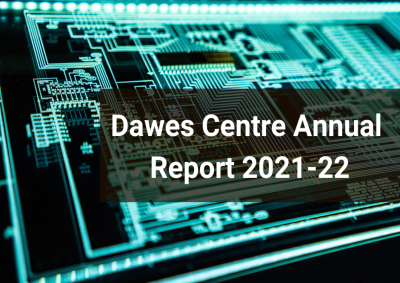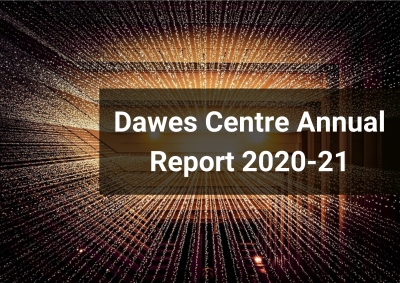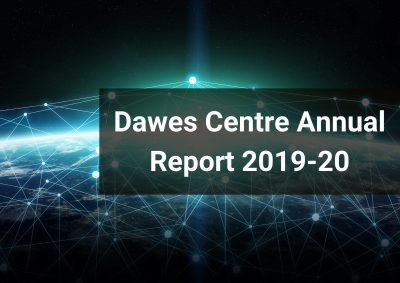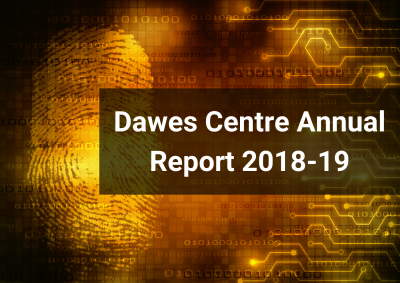Published research articles and other publications will be added here and can also be found via the relevant research projects.
- 2018
- Fernando Miró Llinares and Shane D. Johnson. (2018). Cybercrime and Place: Applying Environmental Criminology to Crimes in Cyberspace. The Oxford Handbook of Environmental Criminology. Edited by Gerben J.N. Bruinsma and Shane D. Johnson.
- Blythe, J., & Johnson, S.D. (2018). The Consumer Security Index for IoT: A protocol for developing an index to improve consumer decision making and to incentivize greater security provision in IoT devices. In proceedings of the Living in the Internet of Things: Cybersecurity of the IoT Conference. IET. London, UK.
- Blythe, J., & Johnson, S.D. (2018). Rapid Evidence Assessment on Labelling Schemes and Implications for Consumer IoT Security. London: DCMS (NOTE: This document can also be found on the GOV.UK website as part of the Government’s Code of Practice for Consumer Internet of Things (IoT) Security for manufacturers, with guidance for consumers on smart devices at home.
- Kamps, J., & Kleinberg, B. (2018). To the moon: defining and detecting cryptocurrency pump-and-dumps. Crime Science, 7(1), 18.
- 2019
- Johnson, S.D., Ekblom, P., Laycock, G., Frith, M.J., Sombatraung, N., Valdez, E.R. (2019). Future Crime. In R. Wortley, Sidebottom, A., Tilley, N., and Laycock, G. (Eds.). Routledge Handbook of Crime Science. Routledge.
- Johnson, S.D., John M Blythe, Matthew Manning and Gabriel Wong (2019). Report to DCMS: The impact of IoT security labelling on consumer product choice and willingness to pay.
- Blythe, J.M., Sombatruang, N., and Johnson, S.D. (2019). Report to DCMS: What security features and crime prevention advice is communicated in consumer IoT device manuals and support pages?
- Blythe, J.M., Johnson, S.D., Manning, M., and Wong, G. (2019). Report to DCMS: What is security worth to consumers? Investigating Willingness to Pay for secure Internet of Things devices.
- Blythe, J.M., Johnson, S.D. (2019). A systematic review of crime facilitated by consumer Internet of Things. Security Journal.
- Shukla, M., Johnson, S. D., & Jones, P. (2019, June). Does the NIS implementation strategy effectively address cyber security risks in the UK? In 2019 International Conference on Cyber Security and Protection of Digital Services (Cyber Security) (pp. 1-11). IEEE.
- Soldner, F., Ho, J. C. T., Makhortykh, M., van der Vegt, I. W., Mozes, M., & Kleinberg, B. (2019, June). Uphill from here: Sentiment patterns in videos from left-and right-wing YouTube news channels. In Proceedings of the Third Workshop on Natural Language Processing and Computational Social Science (pp. 84-93).
- Volodko, A., Cockbain, E., & Kleinberg, B. (2019). Spotting the signs of trafficking recruitment online: exploring the characteristics of advertisements targeted at migrant job-seekers. “Trends in Organized Crime, 1-29.
- Frith, M. J., Simon, M., Davies, T., Braithwaite, A., & Johnson, S. D. (2019). Spatial interaction and security: a review and case study of the Syrian refugee crisis. Interdisciplinary Science Reviews, 44(3-4), 328-341.
- Kleinberg, B., & McFarlane, P. (2019). Examining UK drill music through sentiment trajectory analysis. ArXiv:1911.01324 [Cs].
- van der Vegt, I., Gill, P., Macdonald, S., & Kleinberg, B. (2019). Shedding Light on Terrorist and Extremist Content Removal. Global Research Network on Terrorism and Technology.
- Ife CC, Davies T, Murdoch SJ & Stringhini G (2019). Bridging Information Security and Environmental Criminology Research to Better Mitigate Cybercrime. arXiv preprint arXiv:1910.06380, currently under review at ACM Computing Surveys.
- 2020
- Blythe, J. M., Johnson, S. D., & Manning, M. (2020). What is security worth to consumers? Investigating willingness to pay for secure Internet of Things devices. Crime Science, 9(1), 1.
- Kleinberg, B., van der Vegt, I., & Gill, P. (2020). The temporal evolution of a far-right forum. Journal of Computational Social Science.
- Lukács, G., Kleinberg, B., Kunzi, M., & Ansorge, U. (2020). Response Time Concealed Information Test on Smartphones. Collabra: Psychology, 6(1), 4.
- Nikolvska, M., and Johnson, S.D. (2020). Report to DCSM - IoT Device Support Periods and Default Passwords: An Update.
- Laufs, J., Borrion, H., & Bradford, B. (2020). Security and the Smart City: A Systematic Review. Sustainable Cities & Society, 55, 102023.
- Elgabry, M. (2020). Bio-crime and COVID-19. UCL JDI Special Series on COVID-19: No. 14. ISSN 2635-1625.
- Written evidence submitted by Mariam Elgabry in June 2020: UK Joint Committee on the National Security Strategy for Biosecurity and national security, in light of COVID-19.
- Elgabry M, Nesbeth D and Johnson SD (2020). A systematic review protocol for crime trends facilitated by synthetic biology, Systematic Reviews volume 9, Article number: 22
- Johnson SD, Blythe JM, Manning M, Wong GTW (2020) The impact of IoT security labelling on consumer product choice and willingness to pay. PLoS ONE 15(1): e0227800.
- Kleinberg, B. (2020). Manipulating emotions for ground truth emotion analysis. ArXiv:2006.08952.
- Kleinberg, B., van der Vegt, I., & Mozes, M. (2020, July). Measuring Emotions in the COVID-19 Real World Worry Dataset. Proceedings of the 1st Workshop on NLP for COVID-19 at ACL 2020. ACL-NLP-COVID19 2020, Online.
- Laufs, J., Bowers, K., Birks, D., & Johnson, S. (2020). Understanding the Concept of ‘Demand’ in Policing: A Scoping Review and Resulting Implications for Demand Management. Policing & Society.
- Caldwell, M., Andrews, J.T.A., Tanay, T. et al. (2020). AI-enabled future crime. Crime Sci 9, 14.
- Anderez, D.O.; Kanjo, E.; Pogrebna, G.; Kaiwartya, O.; Johnson, S.D.; Hunt, J.A. (2020) A COVID-19-Based Modified Epidemiological Model and Technological Approaches to Help Vulnerable Individuals Emerge from the Lockdown in the UK. Sensors. 20, 4967.
- van der Vegt, I., Kleinberg, B., & Gill, P. (2020). Too good to be true? Predicting author profiles from abusive language. ArXiv:2009.01126 [Cs.CL].
- van der Vegt, I., & Kleinberg, B. (2020). Women Worry About Family, Men About the Economy: Gender Differences in Emotional Responses to COVID-19. In S. Aref, K. Bontcheva, M. Braghieri, F. Dignum, F. Giannotti, F. Grisolia, & D. Pedreschi (Eds.), Social Informatics (Vol. 12467, pp. 397–409). Springer.
- Elgabry M, Nesbeth D and Johnson SD (2020) A Systematic Review of the Criminogenic Potential of Synthetic Biology and Routes to Future Crime Prevention. Front. Bioeng. Biotechnol. 8:571672.
- Nikolovska, M., Johnson, S.D. & Ekblom, P. (2020) “Show this thread”: policing, disruption and mobilisation through Twitter. An analysis of UK law enforcement tweeting practices during the Covid-19 pandemic. Crime Sci 9, 20.
- Estévez-Soto, P.R., Johnson, S.D. & Tilley, N. (2020) Are Repeatedly Extorted Businesses Different? A Multilevel Hurdle Model of Extortion Victimization. J Quant Criminol.
- Jafari, Z., Davies, T., Johnson, S.D. (2020) Spatial analysis of border closure intervention scheme in conflict-induced displacement. GeoSim '20: Proceedings of the 3rd ACM SIGSPATIAL International Workshop on GeoSpatial SimulationNovember 2020, Pages 1–9.
- Laufs, J. & Waseem, Z. (2020). Policing in Pandemics: A Systematic Review and Best Practices for Police Response to COVID-19. International Journal of Disaster Risk Reduction, Vol 51, 101812, ISSN 2212-4209.
- M. Wixey, E. De Cristofaro and S. D. Johnson, "On the Feasibility of Acoustic Attacks Using Commodity Smart Devices," 2020 IEEE Security and Privacy Workshops (SPW), 2020, pp. 88-97.
- 2021
- Maximilian Mozes, Pontus Stenetorp, Bennett Kleinberg and Lewis D. Griffin (2021). Frequency-Guided Word Substitutions for Detecting Textual Adversarial Examples. To appear in Proceedings of the 16th Conference of the European Chapter of the Association for Computational Linguistics (EACL).
- van der Vegt, I., Mozes, M., Gill, P. et al. (2021) Online influence, offline violence: language use on YouTube surrounding the ‘Unite the Right’ rally. J Comput Soc Sc 4, 333–354.
- Cassilde Schwartz, Miranda Simon, David Hudson, Shane D Johnson. Law Breaking and Law Bending: How International Migrants Negotiate with State Borders. International Studies Quarterly, Volume 65, Issue 1, March 2021, Pages 184–196.
- Kleinberg, B., & Verschuere, B. (2021). How humans impair automated deception detection performance. Acta Psychologica, Vol 213, 103250.
- Bordeanu, O. C., Stringhini, G., Shen, Y., Davies, T. (2021), JABBIC Lookups: A Backend Telemetry-Based System for Malware Triage. In: Garcia-Alfaro J., Li S., Poovendran R., Debar H., Yung M. (eds) Security and Privacy in Communication Networks.
- Delpech, D., Borrion, H., & Johnson, S. (2021). Systematic review of situational prevention methods for crime against species. Crime science, 10(1), 1-20.
- Elgabry, M. and Camilleri, J. (2021) Conducting hidden populations research: A reflective case study on researching the biohacking community, Futures, 132.
- Hutt, O. K., Bowers, K., & Johnson, S. D. (2021). The effect of GPS refresh rate on measuring police patrol in micro-places. Crime Science, 10(1), 1-14.
- Laufs, J., & Borrion, H. (2021). Technological innovation in policing and crime prevention: Practitioner perspectives from London. International Journal of Police Science & Management, 14613557211064053. doi:10.1177/14613557211064053.
- Laufs, J., Bowers, K., Birks, D., & Johnson, S. D. (2021). Understanding the concept of ‘demand’ in policing: a scoping review and resulting implications for demand management. Policing and society, 31(8), 895-918.
- Mai, K.T.; Davies, T.; Griffin, L.D. Brittle Features May Help Anomaly Detection. 9th Women in Computer Vision workshop at CVPR.
- Mozes, M., Stenetorp, P., Kleinberg, B. and Griffin, L., 2021, April. Frequency-Guided Word Substitutions for Detecting Textual Adversarial Examples. In Proceedings of the 16th Conference of the European Chapter of the Association for Computational Linguistics: Main Volume (pp. 171-186).
- Mozes, M., Bartolo, M., Stenetorp, P., Kleinberg, B. and Griffin, L., 2021, November. Contrasting Human-and Machine-Generated Word-Level Adversarial Examples for Text Classification. In Proceedings of the 2021 Conference on Empirical Methods in Natural Language Processing (pp. 8258-8270).
- Schwartz, C., Simon, M., Hudson, D., & Johnson, S. D. (2021). Law Breaking and Law Bending: How International Migrants Negotiate with State Borders. International Studies Quarterly, 65(1), 184-196.
- Soldner, F., Tanczer, L. M., Hammocks, D., Lopez-Neira, I., & Johnson, S. D. (2021). Using Machine Learning Methods to Study Technology-Facilitated Abuse: Evidence from the Analysis of UK Crimestoppers’ Text Data. In The Palgrave Handbook of Gendered Violence and Technology (pp. 481-503). Palgrave Macmillan, Cham.
- Soldner, F., Kleinberg, B., & Johnson, S.D. (2021). Confounds and Overestimations in Fake Review Detection: Experimentally Controlling for Product-Ownership and Data-Origin. arXiv preprint arXiv:2110.15130. (Pre-print – currently under review).
- Tompson, L., Belur, J., Thornton, A., Bowers, K. J., Johnson, S. D., Sidebottom, A., ... & Laycock, G. (2021). How strong is the evidence-base for crime reduction professionals? Justice Evaluation Journal, 4(1), 68-97.
- Talk at Infosecurity Europe in 2021: What do we prioritise to manage third party risks?
- Independent Anti-Slavery Commissioner & University of Nottingham. (2021, November). Re-trafficking: The current state of play.
- Joint and Individual NGO Statements to Biological Weapons Convention, United Nations, Meetings of State Parties, Geneva, 22 – 25 November 2021. UN Web TV
- Joint NGO Statement to Biological Weapons Convention, United Nations, Meetings of Experts, Geneva, 30 August – 8 September 2021. UN Web TV
- Elgabry, M. (2021) Policy brief: Synthetic biology and future crime, Dawes Centre for Future Crime, UCL.
- Elgabry, M. (2021) “National Machinery: Red-Teaming Approach Written Evidence.” UK Parliament Joint Committee on National Security and Machinery, UK Parliament.
- 2022
- Trozze, A., Kamps, J., Akartuna, E.A. et al. Cryptocurrencies and future financial crime. Crime Sci 11, 1 (2022).
- Trozze, A., Davies, T. and Kleinberg, B. (2022), "Explaining prosecution outcomes for cryptocurrency-based financial crimes", Journal of Money Laundering Control, Vol. ahead-of-print No. ahead-of-print.
- Tompson, L., Steinbach, R., Johnson, S. D., Teh, C. S., Perkins, C., Edwards, P., & Armstrong, B. (2022). Absence of Street Lighting May Prevent Vehicle Crime, but Spatial and Temporal Displacement Remains a Concern. Journal of Quantitative Criminology, 1-21
- Soldner, F., Kleinberg, B., & Johnson, S. (2022). Trends in online consumer fraud: A data science perspective. In A Fresh Look at Fraud (pp. 167-191). Routledge
- Elgabry, M., Nesbeth, D., Johnson, S., (2022), The Future of Biotechnology Crime: A Parallel Delphi Study with Non-Traditional Experts, Futures, 102970, ISSN 0016-3287
- Akartuna, E.A., Johnson, S.D. & Thornton, A.E. The money laundering and terrorist financing risks of new and disruptive technologies: a futures-oriented scoping review. Secur J (2022)
- Akartuna, E. A., Johnson, S. D., & Thornton, A. (2022). Preventing the money laundering and terrorist financing risks of emerging technologies: An international policy Delphi study. Technological Forecasting and Social Change, 179, 121632
- Frith, M. J., Bowers, K. J., & Johnson, S. D. (2022). Household occupancy and burglary: A case study using COVID-19 restrictions. Journal of Criminal Justice, 101996
- Nikolovska, M., & Johnson, S.D. (2022). Covid-19 and Future Threats: A Law Enforcement Delphi Study. London: Dawes Centre for Future Crime at UCL.
- Johnson, S. D., Blythe, J. M., Kim, E., & Sombatruang, N. (2022). Crime and the Consumer Internet of Things. In The Handbook of Security (pp. 705-727). Palgrave Macmillan.
- 2023
- Soldner, F., Kleinberg, B., & Johnson, S. D. (2023). Counterfeits on dark markets: a measurement between Jan-2014 and Sep-2015. Crime Science, 12(1), 18.
- Bray, S. D., Johnson, S. D., & Kleinberg, B. (2023). Testing human ability to detect ‘deepfake’images of human faces. Journal of Cybersecurity, 9(1).
- 2024
- Gómez-Quintero, J., Johnson, S. D., Borrion, H., & Lundrigan, S. (2024). A scoping study of crime facilitated by the metaverse. Futures, 103338
- Gómez-Quintero, J., Johnson, S. D., Pasculli, L., Lundrigan, S & Borrion, H. (2024). Policy brief: Crime Facilitated by the Metaverse(s), Dawes Centre for Future Crime, UCL
- Johnson, S. D., & Nikolovska, M. (2024). The effect of COVID-19 restrictions on routine activities and online crime. Journal of Quantitative Criminology, 40(1), 131-150.
- Fuller, A., Vasek, M., Mariconti, E., & Johnson, S. D. (2024). Understanding and preventing the advertisement and sale of illicit drugs to young people through social media: A multidisciplinary scoping review. Drug and Alcohol Review, 43(1), 56-74.
- Ruiz-Gonzalez, A., Wang, M., Taroni, P., Teixera, D., Ekblom, P., Johnson, S., & Choy, K. L. (2024). Advances in nanomaterials applied to crime combat and prevention. Materials Today Communications, 109060.
- Akartuna, E. A., Johnson, S. D., & Thornton, A. (2024). Enhancing the horizon scanning utility of futures-oriented systematic and scoping reviews. Futures, 158, 103340.
- Wong, G., Manning, M., Lo, T. W., & Johnson, S. D. (2024). Triad influence on the detection of crime in Hong Kong. Plos one, 19(2), e0297145.
- Johnson, S.D. (2024). Identifying and preventing future forms of crimes using situational crime prevention. Security Journal, Advanced Online Access.
- Bowers, K. & Johnson, S. (2024). Facing the Future of Crime: A Framework for Police Use of Technology, The Political Quarterly, Advanced Online Access, 1-9.
- Akartuna, E.A., Johnson, S.D. & Thornton, A. (2024). Motivating a standardised approach to financial intelligence: a typological scoping review of money laundering methods and trends. Journal of Experimental Criminology, advanced online access.
 Close
Close






